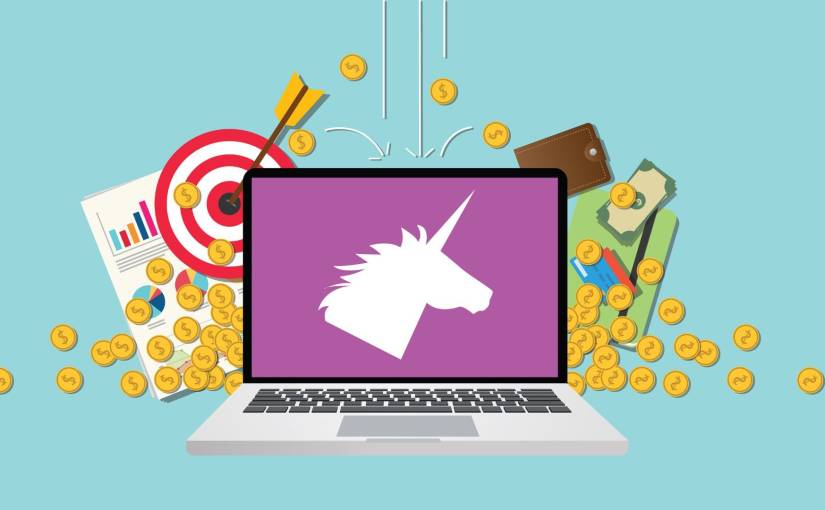How to Scale Unicorns With Partner David Zhang, TVC
The theme of this episode is how to scale unicorns. Joining us for this episode is our partner David Zhang, Partner at TCV ((Technology Crossover Ventures). He focuses on investments in fintech, the internet, and software.
Jonathan Siddharth
I’m excited to welcome David Zhang from TCV. We’ll have a fun conversation over the next 40-45 minutes. Welcome, David.
Here is the full YouTube — Please enjoy this episode: How to Scale Unicorns
And before we get started, could you share a little about TCV and what got you into venture investing?
David Zhang
I’m a partner at TCV, which we founded in 1996. We’re a crossover fund. We’ve been doing this for almost 30 years.
So, think of the typical two founders with a pitch book in a garage. That’s not what we do. Instead, that’s the sort of pre-series-A investment where companies or founders have visions of where they think there are underserved market needs, and they’re coming up with something super excited to try to solve that.
That’s not what we do. We come in after a product has landed and found product market fit and has some escape velocity. So we would invest in any conventional series B’s through public offerings.
And, I think to go back to your question, Jonathan, on how I got to venture, I broadly stumbled upon it, if you will. I have been in and around technology for over ten years. I founded a startup years ago, and that’s how I started getting a taste of it. The startup didn’t work out, but I found ways to be around it, whether it was on the sales side in Goldman for a few years. And then, I also invested in tech companies as a public markets investor for several years before.
Jonathan Siddharth
Sounds great. What’s your opinion on what’s happening in public markets and the ripple effect on private markets? How does that translate into advice that you give to your startups? I’m sure many of your startups are relatively large companies in the unicorn stage and beyond. What guidance for your portfolio companies?
David Zhang
Yeah, it’s undoubtedly an interesting time. It’s interesting for a bunch of reasons.
I think everyone’s like the sky is falling. So many people think it’s doomsday and what’s super interesting about it is that narrative has completely turned if you just rewind the clock. A year ago, it was the complete opposite, right? Things were never rosier. We were at the tip of a bull market, and it was like the party wasn’t going to stop, right? It was like there was no end in sight.
And now it’s like, gosh, the sky is falling, and it’s the opposite narrative. There’s a lot of fear in the market. So the broader issue is that two things need to be parsed separately.
One is the investor sentiment, which is what I just described.
The other is that investor sentiment is changing because there appear to be potential fundamental cracks in the economy. We haven’t seen any systemic collapses or big pockets of the economy get entirely decimated, but there are certainly worries about those things happening. And a big part of that trends and signals portend potential calamity, right? So inflation is always one where it’s not fun. There can be all kinds of different knock-on effects from it. So that’s the big one, obviously, with the geopolitical tensions, not just Russia and Ukraine. But broader geopolitical and economic instability.
I’m trying to be optimistic. There are a lot of worries, but it doesn’t feel like the economy has collapsed.
If the market hits a severe downturn, how long will it last? And what happens in that scenario? There is a bunch of conventional wisdom out there, and one of them that’s super trendy is to make sure you have three years of cash runway, right?
Sequoia sent out this deck. I’m sure you guys have probably seen it too. Anything that goes around just gets circulated like wildfire. It’s almost like the venture community is almost like an influencer bubble.
In my humble view, there’s a danger in providing a one-size fits all type of advice. I think every company’s portfolio is different, so they’re all different sizes, different stages, different geographies, different cash positions, and different market leadership positions.
I will say the one thing we tell all our portfolio companies is to get fit and lean in. So the “get fit” part of it is whatever your circumstances are today, lean inwards a little bit, do some introspection, and figure out which part of the house requires some cleaning up.
Good CEOs will look inside and say: “Hey, maybe we’ve been hiring a little bit too much during the sugar rush phase of the pandemic, and what does that mean for performance management? Have we become soft? Can we squeeze out more from folks that we’ve hired, and are there things that maybe we have completely neglected? Can now use the opportunity to right-size it or improve it?”
Indeed, if you don’t have enough cash, I would almost say you should always have three years of cash runway. So this is becoming the number one piece of advice on the street. And it is kind of silly because that was always supposed to be the case, so if you don’t have that, you better get it now, that’s for sure.
And then you know, the lean in part is that if you’re a market leader, for example, and your house is in order, and things are going well, how do you use this opportunity to separate yourself from the pack? Chaos often creates some of the best opportunities, so we tend to back category leaders. And so, as part of our DNA, we say if you are in a decent spot now, this is the time. Others are going to be potentially suffering. So how do you use this chance to kind of really break away?
Jonathan Siddharth
Yeah, that was super insightful. I like the get fit and lean in. I feel the same way, and at least for me, from Turing’s perspective, we were in a Blitzscaling phase, where in Reed Hoffman’s terms, where you prioritize speed over efficiency in moments of uncertainty. And now, I think there is a shift that we’re seeing where everyone prioritizes efficient growth and scaling a lot more than before. So such things as contribution margin, burn multiples, GTM efficiency, and ROI of different marketing teams become more important.
Do you feel the same way and think the focus on efficiency of growth is more important than just pure top-line growth? So first, we were much more sort of with a high growth rate, and we did not even care about how we got the revenue when we got it. And now we are much more careful about revenue quality revenues. Would you say that?
David Zhang
Yeah! I love the candor there, Jon, and it’s very true. I think you characterize it super well. So there’s a product side and a business side.
The beauty of software, in general, is that you have this concept of MVP. Building a business around software has always been different. When you’re building a business around something, you’re monetizing something. You’re going out to acquire customers. You are creating something around it.
We’ve always thought about that. And this is one of the pillars we talk about internally, but also to our founders. All the companies we invest in have a similar value alignment, and we call this quality of growth. So this has always been our most significant focus area, whether in 2022, 2021, or 2001.
But with quality of growth, the centering question has always been, how do you grow as quickly as possible without sacrificing underlying unit economics? So having just growth is not enough. You need to have as high quality as possible.
So I’ll give an example. We led the investment in a new bank, their Series F, in 2019.
Now they’re a public company, and they’re a great example of high-quality growth. So they have about 60 million customers now, and they have a view of the net present value of each customer when they’re onboarding them and their models to show it. So they have quantifiable risk profiles and ultimately map them to lifetime value, right?
And these things are dynamic as they see real-time signals from how customers behave when they’re paying back bills. You know, when they’re loading up the phone and stuff like that. The vast majority of their customer acquisition is word of mouth. So they acquire customers with very little pocket expense.
When you put those two things together, you get high-quality customers, high LTV, and acquisition at super low costs. So that’s an example of the quality of growth by not just blind growth. They are also growing at a crazy speed on those dimensions, but the quality underlying it is also really high.
Jonathan Siddharth
Yeah, yeah. That’s great, David. How do you measure the quality of growth? Do you have other efficiency metrics that you look at when you evaluate businesses to check the quality of growth and the quality of the revenues?
David Zhang
Customers come in, and they leave, or they stay. If they love something, they typically stay. And you know, a cost goes out with an acquisition, so whether it’s hiring a salesperson, commissions, or paying Google. Sometimes you don’t pay them at all. They call them word of mouth. So all these are different ways to acquire customers. And those customers must bring some kind of value to you, right?
So if you break it down to those three components, the first is how are you acquiring a customer? That’s number one.
And then the number two question is, are they staying? Because if you’re acquiring customers, but they’re leaving at a fast pace, then you have a leaky bucket. So is this a one-time acquisition or a multiple-time acquisition to get the person to that door?
And then finally, it’s doing the math on the value. Whether it’s $3 or $3,000 can make sense depending on what that person eventually pays you back.
The conventional LTV CAC is generally used for subscription-type businesses where things tend to be more of a recurrent nature. The numbers don’t always tell the whole story if you dig deeper. But stuff like retention is super important. So how sticky are your customers, and can you break that down to customer retention? You can break that down into the inverse of that churn. You can break that down to revenue retention because different types of models, whether subscription, usage-based, or transactional, will have different retention metrics.
And then you have LTV that can be measured by knowing if customer sticks for two years, three years, or five years, and during that time, how did they grow with you? And what is the associated economic value that comes with that?
And that’s the fourth piece is more qualitative than quantitative, is how you’re monetizing. Do you think one way is more sustainable than the others? So your way of monetizing your business does factor into quality. So the quality of growth has implications on the revenue stream’s sustainability.
Jonathan Siddharth
That makes sense, David. And in board meetings that you have today, are there any topics you see coming up for discussion that perhaps didn’t come up one or two quarters back?
What is your primary advice to companies that still have to adapt to what may come? I would love to hear your advice for companies of these types.
David Zhang
Here’s the first one. I think many companies are now starting to do scenario planning. So they’re like: “Hey, if the economy goes to different shades of red, are we well positioned to survive?”
And then the next question is: “Are we well positioned to thrive? Are we well positioned to emerge even better? So depending on where you are in this stage of that discussion, or that preparedness, if you will, it typically marches through that sequence.
The second one is talking about the quality of growth again. We’ve always centered around that, but what’s changing this time? We were very sure before. So, let’s make doubly sure this time. So, ensure your quality of growth is super solid. Doing this allows you to be confident about your path without being distracted: “Hey, is this working? Or is it going to come back to bite me later?”
And then the third is the team. And so a lot of it is performance management. You need to know all the people I’ve hired or the people I’m about to hire, whether up and down the stack, people in the engineering team, people on the C-suite management team, and what we expect from them. So narrow the focus to ensure we know what we’re trying to play for.
And in times like this, there are opportunities because many companies are in this trend. Later stage, public companies are right-sizing their teams, so there are many opportunities out there. So just keep an eye out; depending on your growth stage, it could be reasonably attractive. So it’s important not to lose talent.
Jonathan Siddharth
Cool, David. And, if you think of a company’s journey as a sort of there is that 0-1 phase, i.e., finding product-market fit stage. And then you have that early traction where you’ve hired your early team, and you’re in that one to 10 million revenue type run. And then there is the 10 million plus scaling stage at which many post-unicorn companies are likely at.
In your mind, what is different in the way companies need to operate in that post-unicorn stage?
David Zhang
Yeah, that’s a great question. I love how you’re very clear about the centering metrics in your mind with revenues, which reflect scale.
You know, a lot of times, what we hear is: “Hey, what does the company do is $5 billion of equity value is $10 billion.” That’s a valuation number and pricing number. There are billion-dollar startups that have a later stage of maturity than the $10 billion company, right? Like that happens.
And so that’s exactly how we see it. We think of it much more in terms of how many employees does the company have? What’s the revenue scale?
So I think of it as a company’s lifecycle, and a few qualitative stages are important. We have multiple companies in our portfolio. But different companies fall into different stages.
The first one is the pre-product-market fit which we don’t do.
Then the post-product-market fit is what we discussed as growing and naturally hyper-growth. And then, every product that business matures at some point. So, in that hyper-growth phase, we don’t think about [these things], but going from series B to series E needs a lot more. I’ll give you examples.
Amazon today is still unlocking different S curves, small ones or big ones along the way. So from when they founded the company three decades ago, there are still arguably some parts of the business in hyper-growth, and some are not.
And so, the point is, we often talk about second X or new S curves for every product that matures in parallel with the core business or core product or business that’s in hyper-growth.
And so, Amazon with AWS is the most prolific example. They started with the core merchant business, and suddenly, they have a consumer business; where did that come from?
The company is still innovating and unlocking new curves. They’re still in hyper-growth if you will. And then, finally, when all the growth spurts and S curves slow down and die down, the company matures.
And at this point, the company has reached its full potential. So if it’s a great company, it’ll grow slower but at a very healthy compounding rate. And they will hopefully produce or prioritize profit margins if the economics work. So that’s how we see the growth phase. The growth phase is the most exciting in the entire lifecycle of a company because of the explosion of innovation and growth. And that is where I spend all my time at TCV. That is our specialty. And we’ve been doing that for three decades.
Our advice to our founders is that they’re underpinned by a few pillars we discussed. So the quality of growth is number one. That’s something that we have been centering around forever.
The team is super important. Ten out of ten times, the path from a promising startup to achieving greatness as a company depends on whether or not a co-founder can surround themself with what we’d like to call a world-class team.
The team is not just an effort of one super soldier but like the impact of an army. It’s a skill. And so, in the growth phase as a co-founder, you start spending a disproportionate amount of your energy on team quality. It is essential to recognize that the team and the bench you build around you are super important, but most people don’t realize that working on their ability to attract talent is vital. So even if you recognize it, it doesn’t mean you can do it right.
And then the third one is keeping your eye on the S curves. I’m going to describe a few conflicting statements in there. But you will appreciate why it’s kind of interesting.
This subject relates to some of the stuff we discussed early on S curves and examples. It’s a very tough balance because, on the one hand, as a co-founder, 200 percent of your focus needs to be on the core product and mission.
Suppose you dropped the ball in that – game over. But if you’re doing it right, these new opportunities and perspectives will often l emerge with the organic evolution. And they can be big ass curves that mark inflection points and even be needle moving. So how do you focus on scaling your core product and business to its full potential while not being distracted by new shiny objects?
It’s very different for every company in every category. So many things are path-dependent. But often, it comes down to this delicate balance between visionary and execution. And the very, very best CEOs have this unique mix of both qualities of vision and execution. Such CEOs can orchestrate a team around them to achieve both simultaneously. So if you’re good at one, how do you make sure that the other gets done, whether or not it’s you that’s driving it, or you have a great team that’s driving?
Jonathan Siddharth
That was super interesting, David. It’s somewhat paradoxical and something I think about a lot. How do you work on maximizing the fullest potential of the current business and not skipping a beat while looking for that next S curve?
I’m reminded of Apple in a sense. In the early days, the iPod to iPhone transition. It was tough, right? I mean, even after the iPhone, you could argue that the iPad and Apple Watch were kind of good, but not as good as the previous one. And it’s a balancing act to sort of keep optimizing the current machine to its fullest hilt and go while continuously running a background process for the next step function shift.
What are the most common pitfalls you see companies make in that post-product-market fit scaling stage?
David Zhang
The number one danger is losing sight of the product and your customers. And so, what you got here in the first place won’t get you to the next stage. And that’s the theme that we’ve been focused on this entire podcast, but at the same time, there are specific primitives you can never let go of.
There are some truisms. And one of them is your product.
Most of the companies that we invest in are product-driven companies. They are often the market leader not because of market positioning, but they are the market leader because they have the best product in the market. Their product is better, faster, and cheaper. And a lot of times, there are technological underpinnings. That’s the secret sauce.
When I say losing sight of things, I mean the culture and the ingredients for product innovation and velocity. Those things generally tend to portend success. And people often say: “My product is flying off the shelf. I never had to focus on building a sales team. Now I’m going to amass A killer sales force with a CRO of XYZ background. And we’ll go out and ensure we’re getting our stuff out through the channels.” But in all of this, you forget about your product, right? The core product itself needs to keep innovating.
You must consider how your company and customers are evolving with the market. How many times has your company, your product catalyzed behavioral change? Customers are never satisfied. They will grow their expectations, so can you keep up with that pace of delivering a magical user experience?
And that is the key, right? If you focus too much on other stuff, you can get the best sales team and efficiency metrics in the world. But if you forget about making your product much better than anyone else, and if the innovation slows down, it’ll catch up with you over time.
Jonathan Siddharth
That’s excellent advice. Sometimes when you get too large, you look at many spreadsheets, dashboards, and metrics. And there is a risk that you may lose touch with the product, the roadmap, and your customers, right?
This is something I think about a lot, and one of the things I love doing is I send emails to all our customers who sign up for the first two weeks of the product, and I just have a conversation with them about how their first how their experience with Turing has been.
And I find I’m blown away by how detailed their responses are. People send me these long emails about what they want to see in the product.
And I’ve never written an email to a company CEO saying: “Hey, can you build this, can you do that?” But it’s incredible how responsive customers are if you just ask. So we take this as a crucial input source when considering what we put in our product roadmap. What do we build next?
And some of our customers say: “I’d love to hop on a Zoom and share more thoughts in more detail.” I’m blown away because these are C-suite-type folks who are directors of engineering or heads of engineering who want to hire engineers.
David Zhang
You know precisely the spirit of what I’m saying! Right. So a lot of companies track NPS or CSAT. Those are the two scores to understand how customers are feeling. So, if there’s any drop in satisfaction or other negative trends, that’s a warning sign.
So you just got to make sure they’re super happy. The hard part is getting to the minds of their minds and understanding their experience, how it’s evolving, and how there might be pockets of underserved needs that are emerging already exists that you can solve. If you don’t solve that today, or you don’t produce that surplus value, that becomes a lost opportunity. And if that grows over time, customers will want more. That’s just how the journey is.
Jonathan Siddharth
Yeah, that’s right. And David, I have one final question. And then I’m going to ask Kat from our Chief of Staff team to ask a question. My last question is, execution is essential in this product-market market fit and scaling phase. So having a good cadence is important. I liked this phrase, “Step by step, ferociously.” And also someone who said his goal was to build an operationally fearsome company.
Board meetings are an excellent way to ensure the company execution marches to a very tight beat. How do you like to run board meetings? What is your TCB POV on board meetings for companies in that crucial post-product-market fit scaling stage? What topics do you tend to discuss for maximum impact?
David Zhang
That’s a great question. What we focus on is having a handle on the pulse on how you’re tracking execution. So execution is often an output of strategy as well as focus.
You’re not going to succeed in everything you do, right? So, the first thing we always try to do, whether it is board members, investors, or even just friends, is to advise how that when they’re about to start something, they should also try to think about what success looks like. The best way to do this is to keep things as simple as possible and not complicate them. But, in addition, it’s crucial to have the discipline to reflect on that all the time.
So I have launched a product for six months or even three months. The easy answer would be: “Okay, things seem to be going well. Let’s give it another year.” The good executors will say: “Yeah, we have enough data points from 6 months. If we don’t have enough data points, let’s find them and be critical of why we succeeded. And how does that affect the original Northstar? Whether it’s their KPIs or broad strokes qualitative outcomes. Whether it is a stop or a do more. And having that very disciplined but also frequent feedback loop is critical.
Jonathan Siddharth
That’s great insight, David. We think the same way. So, the first question we ask is: “What does success look like?” Sometimes you have a way to estimate it. Sometimes you don’t. So, it’s always good to have that benchmark baseline to know if we’ve succeeded or failed.
I’m now going to invite Kat from our Chief of Staff team to ask you a question.
Kat Hu
Hello, David. So you’ve touched on inflection points in the past. You mentioned it a bit here in terms of S curves. Could you share more about how you think about inflection points for companies in the scaling phase?
David Zhang
Yeah. So if you think of a company as a living, breathing creature, that’s how I like to describe companies. So, many times the metaphor for inflection points would probably be these crossroads in a person’s life, which precedes the change in opportunities, right?
So, for example, physical growth spurts, new jobs, moving countries, and cities. So like those big moments. That’s the metaphor for inflection points for a company. I’ll give you two examples to bring this to life.
I love using specific companies in our portfolio for a while now. So the first one is Netflix. Suppose you trace the history of Netflix, which we’ve invested in since 1999 and are still one of the largest shareholders. Netflix was originally a DVD mail-to-home business. I don’t remember the last time I saw a DVD, but that’s how they started. And then, in 2011, they announced this plan to split as mail and streaming services. And they required customers to pay for two subscriptions if they wanted both DVDs and streaming, hoping that people would move to streaming.
That was a strategic decision. Looking back on this, it would have also allowed Netflix to invest more heavily in content needed to drive the subscription business. At least that was the thinking. But customers weren’t happy. The churn rate increased, and then the stock plummeted by 70 percent. That’s an interesting inflection point in the company’s life. At least at TCV, we thought: “Hey, streaming is a potential form factor inflection that will fundamentally alter consumer behavior.”
That’s very clear today. It wasn’t apparent at that point. That was our chance to invest. So we added $200 million of fresh capital to Netflix and its vision to double down on streaming. And so that’s one example of inflection.
I’ll go to the bank which we talked about before. They started with a credit card product. Their second product was this company banking account with savings and checking. When we invested in it, this product had just launched. So we spend a lot of time understanding the product. We thought, gosh, this is a super significant development. We felt that even though it’s not being monetized today, it had the potential to be the center of gravity of workflow.
We believed this thing would be able to unlock a multi-product distribution and really strengthen the business mode. So, we looked at this product and said: “This is an inflection point for the company. It will go to multi-product because of this, or it has that potential.”
People thought at that time were like: “Gosh. $10 billion.” But that was the price we were paying because we understood this inflection point.
Kat Hu
Both were fascinating examples. Do you have any books, podcasts, or blog posts that you recommend to CEOs thinking about growth in their startup?
David Zhang
Yeah, too many. Some of these are victims of recency bias. Frank Slootman’s Amp It Up is an excellent book. It’s not just not growth, but it’s also leadership. There is an audio podcast called ‘Invest Like the Best.’ I think many people follow, at least in my echo chambers.
There are blogs that I read. So Stratechery by Ben Thompson is pretty good. Pedro Franceschi, the co-founder of Brex, has a Medium blog, where he writes about the company and its products along with his journey with mental health. He also shares profound thoughts on how people scale.
And yeah, there’s probably a list of 50 others, and I can share that with you via email.
Jonathan Siddharth
Thank you, David. I enjoyed this conversation.










